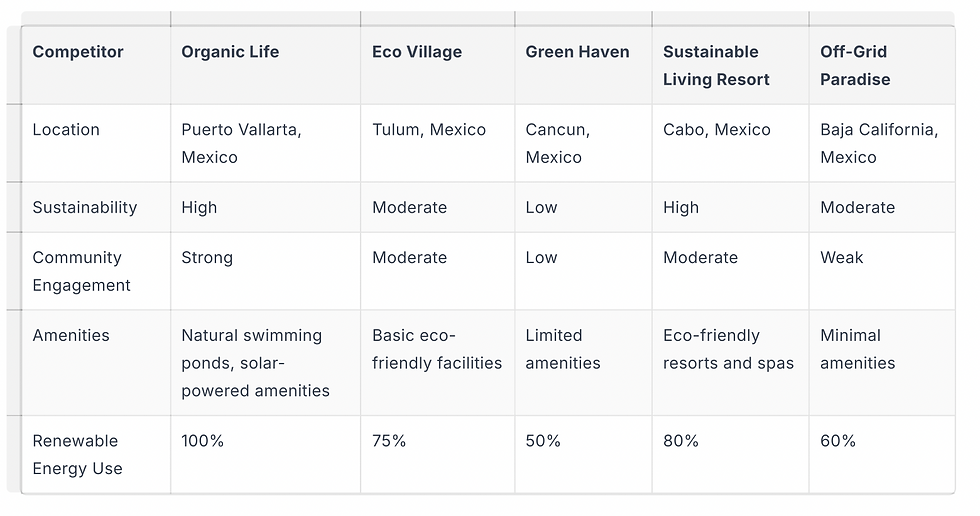Real Estate trends in Puerto Vallarta
- Balint Vojnits

- Jan 28
- 4 min read
Market size and trends
Stable and growing economies, such as the Mexican economy, can lead to a significant increase in the value of real estate in tourist destinations. To effectively estimate the return on your investment, it is essential to consider various factors related to the market.
Key Considerations for Estimating Return on Investment
Market Specialties: Understand the unique characteristics of the local real estate market.
Market Trends: Analyze current trends that may influence property values and demand.
Tourism Growth: Evaluate the growth potential of tourism in the area and its impact on real estate.
Regulatory Environment: Be aware of local laws and regulations that may affect property ownership and investment.
Economic Indicators: Monitor economic indicators such as employment rates, inflation, and GDP growth.
Infrastructure Development: Consider ongoing and planned infrastructure projects that may enhance property value.

The residential real estate market is experiencing a shift towards sustainable and eco-friendly living solutions, driven by increasing environmental awareness and consumer demand for green alternatives. As Organic Life positions itself within this market, understanding and leveraging key market trends is crucial to aligning with consumer preferences and capturing market share.
Rise of Eco-Friendly Living
Consumers are increasingly prioritizing eco-friendly living environments that offer sustainability and a reduced carbon footprint. This trend is particularly prominent in residential real estate as individuals seek communities that align with their environmental values.
Key Points
Increasing demand for renewable energy solutions in housing
Growing interest in sustainable building materials and designs
Preference for communities with integrated green spaces
Growing Interest in Off-Grid Living
Off-grid living is gaining traction as individuals seek independence from traditional utility systems. This trend is fueled by a desire for self-sufficiency and a more sustainable lifestyle, offering a unique opportunity for niche housing markets.
Key Points
Increased consumer interest in energy independence
Expansion of technology supporting off-grid capabilities
Rising market for self-sufficient homes and communities
Integration of Nature in Urban Planning
Urban planning is increasingly integrating natural elements to improve living conditions and promote health and well-being. This trend reflects a broader societal shift towards valuing green spaces in residential developments.
Key Points
Emphasis on biophilic design in architecture
Expansion of urban green spaces like parks and ponds
Recognition of health benefits associated with natural surroundings
The global demand for sustainable living solutions has been on a steady rise, driven by increased environmental awareness and the need for climate action. As more individuals and families seek to reduce their carbon footprint and embrace eco-friendly practices, there is a significant opportunity for businesses like Organic Life to capture a share of this expanding market. This section examines the market size and explores key trends shaping the future of sustainable living projects.
Market Trends
Trend 1: Rising Environmental Consciousness
An increasing number of consumers are making lifestyle choices that reflect their commitment to environmental conservation and sustainability.
Increased adoption of renewable energy sources
Greater demand for eco-friendly housing
Rise in sustainable lifestyle products
Organic Life can leverage this trend by promoting its solar-powered amenities and organic farming initiatives.
Develop marketing strategies that highlight the sustainability and environmental benefits of living in the park.
Partner with eco-friendly brands to enhance the community's sustainable living options.
Trend 2: Growth in the Off-Grid Living Market
Off-grid living is becoming more popular as individuals seek independence from traditional utility systems and desire more self-sufficient lifestyles.
Technological advancements in solar and battery storage
Increased interest in autonomous and self-reliant living spaces
Expansion of eco-villages and off-grid communities
Organic Life can capitalize on this trend by showcasing the benefits of its off-grid infrastructure.
Invest in community education programs on self-sufficiency and renewable technologies.
Offer workshops and tours that highlight the benefits and intricacies of off-grid living.
Trend 3: Health and Wellness Focus
Consumers are increasingly prioritizing health and wellness, with a focus on natural and holistic living environments.
Growing interest in organic food and farming practices
Increased demand for natural recreational spaces
Popularity of wellness-oriented communities
Organic Life can leverage this trend by promoting its community gardens and natural swimming ponds.
Develop wellness-focused programs and events that attract health-conscious individuals.
Collaborate with local wellness experts to enhance community offerings and create a holistic living environment.

The off-grid living industry is experiencing significant growth as more individuals and families seek sustainable and eco-friendly lifestyle options. The movement towards off-grid living is driven by increasing environmental awareness, technological advancements in renewable energy, and a desire for energy independence.
Key Industry Trends
Renewable Energy Adoption: There is a rising trend in the adoption of solar and wind energy systems, making off-grid living more accessible and efficient.
Eco-friendly Construction: The demand for sustainable building materials and methods is increasing, with a focus on minimizing environmental impact.
Technological Innovations: Advances in energy storage, water purification, and waste management are enabling more practical and comfortable off-grid living solutions.
Market Drivers
Environmental Awareness: Growing concern over climate change and environmental degradation is driving interest in sustainable living options.
Cost of Living: Rising urban living costs push consumers to seek alternative, more economical lifestyles.
Government Incentives: Many governments are offering incentives for renewable energy adoption and sustainable building practices, promoting off-grid developments.


